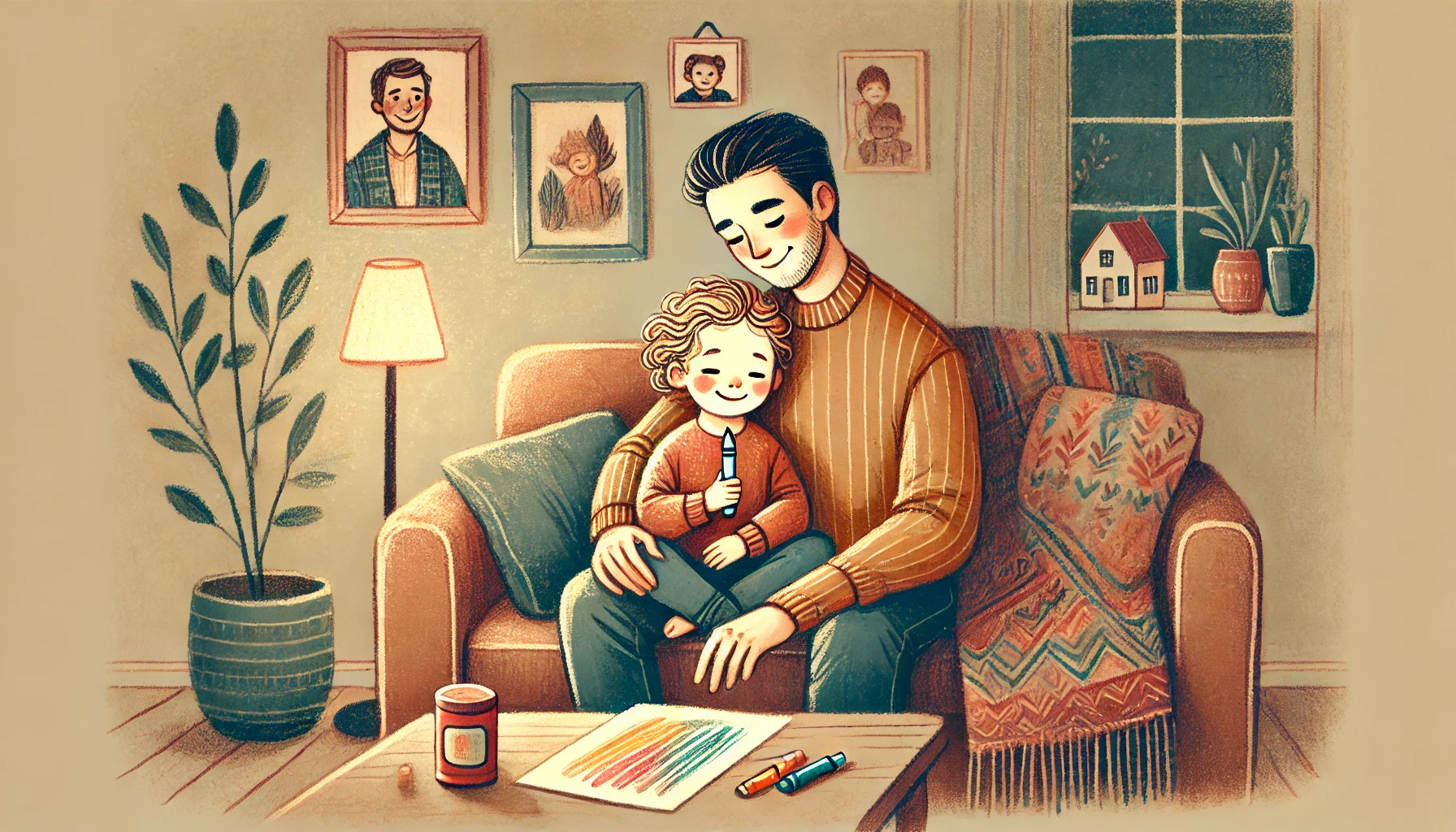Introduction
Break Negative Thought Patterns: Negative thought patterns are a common experience that can significantly affect mental health and overall well-being. These patterns often manifest as automatic, repetitive, and self-defeating thoughts that distort reality and reinforce feelings of anxiety, depression, and low self-esteem. Left unchecked, negative thinking can create a vicious cycle, leading to further emotional distress and poor mental health outcomes. From a mental health counseling perspective, addressing and breaking these negative thought patterns is crucial for improving an individual’s psychological health. This article explores various therapeutic approaches and strategies that counselors use to help clients break negative thought patterns, including Cognitive Behavioral Therapy (CBT), mindfulness practices, and self-compassion techniques. Additionally, the role of neuroplasticity in reshaping thought patterns will be discussed, emphasizing the capacity of the brain to adapt and change in response to new experiences.
Understanding Negative Thought Patterns
Negative thought patterns, also known as cognitive distortions, are habitual ways of thinking that are often irrational and pessimistic. These distortions skew how individuals perceive themselves, their environment, and the future, often exacerbating emotional pain and psychological suffering. Negative thought patterns can arise in response to stress, trauma, or persistent emotional struggles, but they often become entrenched over time, leading to automatic, self-perpetuating cycles.
Common Types of Cognitive Distortions
Cognitive distortions are pervasive and can affect people across various contexts, including their personal relationships, work, and self-perception. According to Aaron Beck (1976), one of the founders of Cognitive Behavioral Therapy (CBT), these thought patterns often contribute to emotional distress and mental health challenges. Some common types of cognitive distortions include:
- All-or-Nothing Thinking: Viewing situations in extremes, where anything less than perfect is seen as a complete failure. For example, a person may think, “If I don’t get an A on this test, I’m a total failure.”
- Catastrophizing: Expecting the worst possible outcome in any given situation, regardless of the likelihood. This can lead to heightened anxiety and avoidance behaviors. For example, someone might think, “If I make a mistake at work, I’ll get fired and end up homeless.”
- Overgeneralization: Making broad, sweeping conclusions based on a single event. For example, after one bad date, a person might think, “I’ll never find love.”
- Mental Filtering: Focusing exclusively on the negative aspects of a situation while discounting any positive elements. For example, after receiving mixed feedback at work, a person might obsess over the criticisms while ignoring the praise.
- Disqualifying the Positive: Automatically dismissing positive experiences or accomplishments as insignificant or unworthy of attention. For instance, an individual might think, “I only did well because the task was easy, not because I’m capable.”
- Mind Reading: Assuming that others are thinking negatively about oneself without any evidence to support this belief. For example, a person may assume, “She didn’t reply to my message because she hates me.”
- Should Statements: Rigid rules about how oneself or others “should” act, which can lead to guilt, frustration, or disappointment. For example, “I should always be happy,” or “People should always be kind to me.”
These thought patterns are often automatic, and individuals may not even be aware of them. However, the cumulative effect of engaging in cognitive distortions is profound, leading to increased stress, anxiety, depression, and feelings of helplessness.
The Role of Cognitive Behavioral Therapy (CBT)
One of the most effective counseling approaches for breaking negative thought patterns is Cognitive Behavioral Therapy (CBT). Developed by Aaron Beck in the 1960s, CBT is based on the premise that thoughts, emotions, and behaviors are interconnected, and changing one’s thought patterns can lead to significant emotional and behavioral changes (Beck, 2011). CBT helps clients identify their cognitive distortions, challenge these thoughts, and replace them with more balanced and realistic thinking.
Identifying Negative Thought Patterns
In CBT, the first step in breaking negative thought patterns is awareness. Many individuals are unaware of the automatic thoughts that contribute to their emotional distress. Counselors work with clients to identify these negative thoughts by using tools such as thought records or journaling. These tools encourage individuals to document their thoughts in specific situations, particularly those that trigger strong emotional reactions, such as anxiety, sadness, or anger.
For example, if clients feel anxious before a social event, they might write down thoughts like “I’ll embarrass myself” or “Everyone will think I’m awkward.” By identifying these thoughts, clients can begin to see how their thinking contributes to their emotional state.
Challenging Cognitive Distortions
Once negative thoughts are identified, the next step is to challenge them. Counselors help clients examine the evidence for and against their negative thoughts, encouraging them to look for more balanced and realistic perspectives. This process is known as cognitive restructuring.
For instance, if a client believes, “I’m a failure because I didn’t get the job,” the counselor might ask, “What evidence do you have that you are a failure? Have you succeeded in other areas of your life? Could there be other reasons why you didn’t get the job that has nothing to do with your worth as a person?” This questioning helps clients recognize that their negative thoughts are often based on limited or skewed evidence.
Replacing Negative Thoughts with Balanced Thinking
After challenging negative thoughts, clients are encouraged to replace these thoughts with more balanced, realistic alternatives. This doesn’t mean forcing positivity but rather adopting a more rational and objective view. For example, instead of thinking, “I’ll never succeed at anything,” a more balanced thought might be, “I didn’t succeed this time, but I’ve achieved other goals in the past, and I can learn from this experience to improve.”
Over time, with practice, these more balanced thoughts can replace automatic negative thoughts, leading to improved emotional well-being and reduced distress.
Mindfulness and Breaking Negative Thought Patterns
In addition to CBT, mindfulness has emerged as a powerful tool for breaking negative thought patterns. Mindfulness involves being fully present and aware of one’s thoughts, feelings, and surroundings without judgment. By cultivating mindfulness, individuals can observe their negative thoughts without becoming entangled in them or reacting impulsively.
Mindfulness-Based Stress Reduction (MBSR)
Mindfulness-Based Stress Reduction (MBSR), developed by Jon Kabat-Zinn, is a therapeutic approach that combines mindfulness meditation and body awareness to help individuals manage stress and negative thinking. Research has shown that MBSR can significantly reduce symptoms of anxiety, depression, and rumination, making it an effective intervention for breaking negative thought patterns (Kabat-Zinn, 1990).
In MBSR, individuals learn to observe their thoughts as they arise without judgment or attachment. By practicing non-reactivity, clients can distance themselves from their negative thoughts, recognizing that thoughts are not facts and do not have to control their emotions or behavior.
For example, a person who experiences recurring thoughts of “I’m not good enough” can learn to observe these thoughts without immediately believing them or letting them dictate their mood. Instead, they can acknowledge the thought, recognize it as just a passing mental event, and let it go. This process can prevent negative thoughts from spiraling into deeper emotional distress.
Mindfulness and Cognitive Fusion
One of the key benefits of mindfulness is its ability to reduce cognitive fusion—the tendency to become entangled with one’s thoughts and believe them to be absolute truths. In a state of cognitive fusion, individuals may feel as though they are their thoughts, making it difficult to separate themselves from negative thinking.
Through mindfulness practices, individuals learn to create cognitive defusion, which allows them to observe their thoughts without becoming absorbed by them. This process helps individuals break the automatic connection between thoughts and emotions, reducing the power of negative thought patterns.
Self-Compassion as a Tool for Breaking Negative Thought Patterns
Another important aspect of breaking negative thought patterns is cultivating self-compassion. Many individuals who struggle with negative thinking are highly self-critical, often holding themselves to unattainable standards and harshly judging their perceived shortcomings. This self-criticism can reinforce negative thought patterns and contribute to feelings of worthlessness, anxiety, and depression.
The Role of Self-Compassion in Mental Health
Self-compassion, as defined by Kristin Neff (2011), involves treating oneself with kindness, understanding, and care in the face of personal failures or difficulties. It consists of three key components:
- Self-kindness: Being gentle and understanding with oneself rather than harshly critical.
- Common humanity: Recognizing that suffering and imperfection are part of the shared human experience and that one is not alone in their struggles.
- Mindfulness: Holding one’s thoughts and emotions in balanced awareness without exaggerating or suppressing them.
By cultivating self-compassion, individuals can counteract the harsh self-criticism that often fuels negative thought patterns. For example, rather than thinking, “I’m worthless because I made a mistake,” a person practicing self-compassion might think, “I made a mistake, but that’s okay. Everyone makes mistakes, and I can learn from this.” This shift in thinking not only reduces negative self-talk but also fosters emotional resilience and well-being.
Compassion-Focused Therapy (CFT)
Compassion-Focused Therapy (CFT), developed by Paul Gilbert (2010), is a therapeutic approach that specifically targets self-criticism and shame. CFT helps individuals develop a compassionate self through imagery exercises, mindfulness, and self-soothing techniques. By strengthening their capacity for self-compassion, individuals can break free from the cycle of negative thinking and develop a more supportive, nurturing inner dialogue.
For example, a client who struggles with feelings of inadequacy might be guided through a visualization exercise in which they imagine a compassionate figure offering them comfort and reassurance. This practice can help clients internalize a more compassionate voice, replacing the harsh, critical thoughts that previously dominated their thinking.
Neuroplasticity and Changing Thought Patterns
One of the most encouraging aspects of breaking negative thought patterns is the brain’s ability to change and adapt through neuroplasticity. Neuroplasticity refers to the brain’s capacity to reorganize itself by forming new neural connections in response to learning and experience (Doidge, 2007). This means that with consistent effort and practice, individuals can reshape their thought patterns and create healthier, more adaptive ways of thinking.
Strengthening Positive Thought Patterns
Just as negative thought patterns can become automatic through repetition, positive thought patterns can be strengthened through intentional practice. Research on neuroplasticity shows that when individuals repeatedly engage in positive thinking or mindfulness practices, new neural pathways are formed, making it easier for these thoughts to become habitual (Doidge, 2007).
For example, someone who regularly practices cognitive restructuring in CBT or mindfulness-based techniques can strengthen their ability to recognize and challenge negative thoughts. Over time, this leads to a brain that is less likely to default to negative thinking and more inclined to adopt balanced, rational thoughts.
The Role of Gratitude
One simple but effective way to strengthen positive thought patterns is through the practice of gratitude. Studies have shown that regularly reflecting on things one is grateful for can shift attention away from negative thoughts and increase feelings of happiness and well-being (Emmons & McCullough, 2003). Gratitude journaling, in which individuals write down a few things they are grateful for each day, is a practical exercise that reinforces positive thinking and fosters a more optimistic outlook.
Conclusion
Breaking negative thought patterns is a critical step toward improving mental health and emotional well-being. Through therapeutic approaches such as Cognitive Behavioral Therapy, mindfulness practices, self-compassion, and neuroplasticity, individuals can learn to recognize, challenge, and replace negative thinking with more balanced, realistic thoughts. With consistent practice and support, individuals can reshape their thought patterns, reduce emotional distress, and cultivate a healthier, more positive mindset.
References
Beck, A. T. (2011). Cognitive therapy of depression. Guilford Press.
Gilbert, P. (2010). Compassion focused therapy: Distinctive features. Routledge.
Neff, K. (2011). Self-compassion: The proven power of being kind to yourself. William Morrow.






